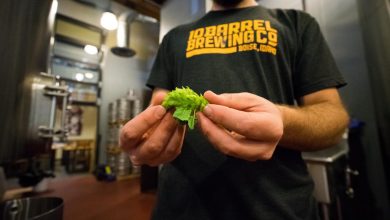The Path to Your First Homebrew: Choosing and Brewing

For any new brewer, the homebrewing process can be intimidating. There is a lot to be done, and many places that the entire process can be spoiled. There is equipment to be purchased and research to be done. Through this article, we will begin to demystify the process for you.
This will not be a comprehensive book of how to brew each and every kind of beer. Still, it will detail the essential characteristics of the brewing process and provide some details of the differences between certain brewing beers.
Choosing Your Brew
There is a range of processes that take place throughout the world of brewing. Some beers take much longer to complete than others, and you cannot make the mistake of selecting your favorite style of beer without first doing your research into the process. If you dive in without knowing what to expect, there is a strong chance you will end up with more of a process than you bargained for and an even greater likelihood that you will mess it up.
For example, a blended lambic is not something that you should be trying to take on at the start. This will not only take years of brewing but will require years of successfully brewing multiple lambics for blending. These are some of the more difficult and complicated brews, and for a beginner, there are way too many places to screw it up.
If you are only getting your brewing journey started, some of the best brews to begin with include American Ales or Porters. You can search homebrew shops for ingredient packages of these styles of brews, or you can look into getting the ingredients on your own. The methods you decide to use for brewing will determine the equipment you need to purchase. We’ll get more into that later.
Cleaning and Sanitation
This is an essential part of the process. Stating this may seem obvious, but it cannot be overstated. It is not only imperative that you are making sure to thoroughly clean anything that is going to be touching your materials and ingredients, but you must also do that cleaning with the appropriate forms of cleaners. By throwing in typical soaps, detergents, and bleaches, you are putting your final product at serious risk.
Cleaning is not the only important part of the preparation process. The boiling process is an effective method of killing many germs that collect on your equipment, but you still want to make sure to sanitize everything. It is especially important to take into account any of the pieces of equipment that were not used in the boiling process. Those will undoubtedly need to be sanitized of any bacteria that they’ve gathered. Just like with the cleaning process, you should be using sanitizer that is designed especially for brewing equipment and is naturally safe.
Forms of Brewing
Beginner homebrewers will likely not be starting with brewing the same way a typical brewery does. There are multiple ways of brewing, and they are not all created equally.
Extract Brewing

Extract brewing is the most straightforward form of brewing, and for complete new beginners, this is where you should be starting. Extract brewing can be advantageous for new brewers since there are fewer complexities to the process.
Most homebrewing flavor kits will include a malt extract mix. These are dry or liquid malt extracts that are derived from the process of malting that removes the sugars from the grains you are using in the brew. By having the extract to start with, you will be removing the mashing process from your brewing. This simplifies the process but does have a few downsides.
First is that the extract will not be as fresh as if you were to be using your own mashing process. Also, you will lose some of the control you have over the final product of your brew. Using these prepackaged extracts gives you less flexibility for creativity in the brewing process.
Partial Mash
This is an excellent next step for those who are looking to move on from the extract-only brewing. This kind of brewing uses some extract with the addition of some mashed grains. There is a need for some more space with this process but not a tremendous one. Moving to this level can create more complexities in flavor profiles, and more creativity can be achieved in the brews that the brewer is creating.
All Grain Brewing
This is the purest form of brewing. For the people that are truly devoted to brewing, this will be the ultimate goal, but it still doesn’t mean you should start here. This form of brewing requires an increase in space and a larger budget for equipment.
There is a give and take when it comes to the expense of moving to this more sophisticated form of brewing. The ingredients may be less expensive than purchasing the malt extract – one of the more costly components you could buy -, but there will be a need for more equipment, which adds to your expenses as well. Not only do costs go up, but you also need to find an appropriate place to put this equipment. The extra space may be the biggest issue that you have in this situation and could very well dictate which brewing style you will use.
The Brewing Processes

Mashing
Mashing will differentiate based on the style of brewing you are implementing. The mash activates grain enzymes that create sugars from the starches. This is the process the ends up creating the necessary foods for the yeast.
By submerging your grains in hot water, heat will break down starches and be able to activate essential enzymes in the grain. In the end, this will allow these starches to become sugars that are fermentable for a later process. Besides using clean equipment as we already covered, make sure you have high-quality water, you are maintaining an appropriate temperature, and you are stirring with consistency. Before attempting this on your own, it would be a good idea to observe an experienced brewer displaying this process. Either find a friend that homebrews or a video online that demonstrates proper malting for the brewing style you are doing.
Lautering
After mashing, you will have a liquid product that is known as the ‘wort.’ Lautering is the process of separating the wort from the grains. The aim is to get any leftover sugars off the grain and into your wort. The goal is to have as many sugars as possible. The sugar is what the yeast will be feeding on to convert to alcohol and make your beer. The more sugars you have in your wort, the higher the likelihood of having a successful fermentation.
Depending on your brewing methods, the lautering process could look a little different. Sparging is a method that is often used that rinses the remaining grains with water of a higher temperature than your wort. This is an excellent method to use for making sure you are getting all the sugars possible. Again, it would be of great value to a first-time brewer to observe this process being done by someone with experience either in a video or in person.
Boiling
For this part of the process, you will be increasing the heat over an expanded amount of time. This step in the process kills dangerous enzymes and removes oxygen. It lowers the pH of the wort environment.
This is where you will be adding one of the essential ingredients to your beer: the hops. Hops are most known for their prevalence in beers such as IPAs but are used to create a range of effects in beer. Regardless of the end flavor you are looking for, hops are essential with their bitterness to offset the sweetness of the grain.
The addition of hops also plays a role in preserving a healthy environment for your wort. As a whole, the boiling process, and everything that is happening during this process, is done to ensure the best possible scenario for fermentation to take place effectively.
Cooling the Wort
You will need to cool down your wort to room temperature, and this should be done as quickly as possible. While you implement this cooling process with some haste, do not allow yourself to be sloppy with it. Avoid splashing at all costs and do not allow any outside waters to spill into your wort. This could compromise the integrity of your mixture.
This rapid cooling could be accomplished with an ice bath or with a piece of equipment known as a wort chiller. Both of these methods are effective and have their own risks introduced in potentially contaminating your wort. When you reach a higher level of brewing or begin brewing more at one time, you will want to invest in a wort chiller to reduce the contamination risks through splashing.
In completing these steps, you would have gone through the brewing process for the first time, but there is still much more to be done. In the second part of this article, we will dive into fermentation, gravity reading, and bottling.



